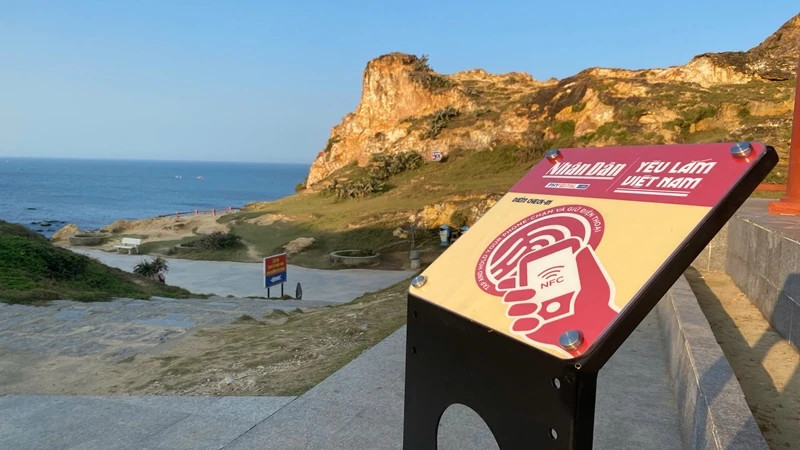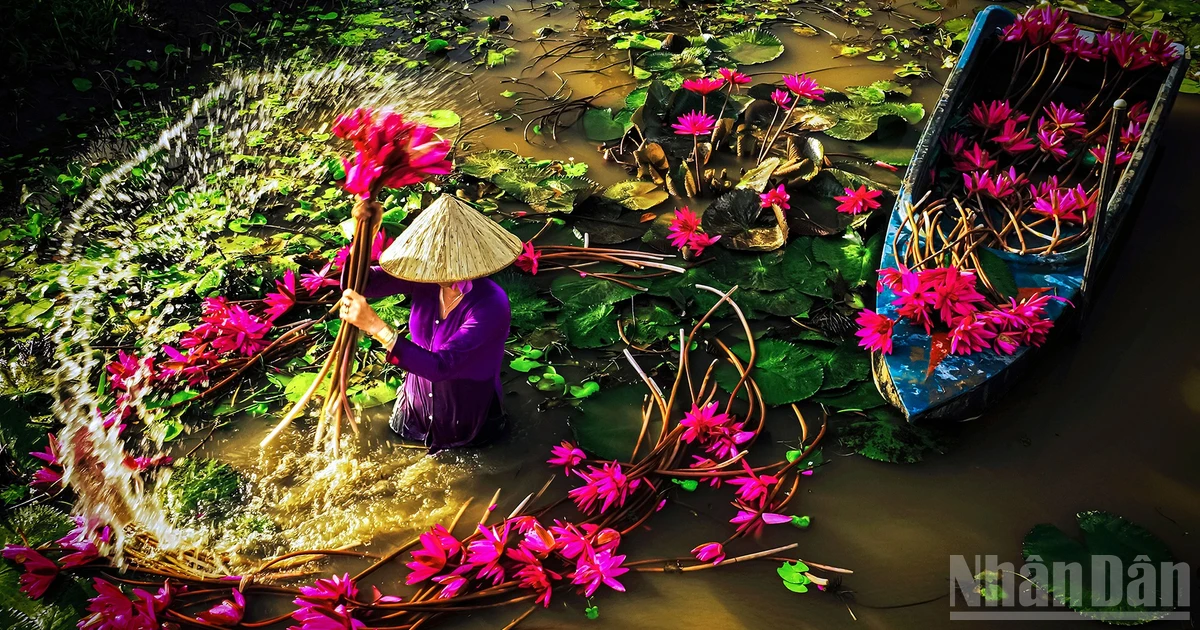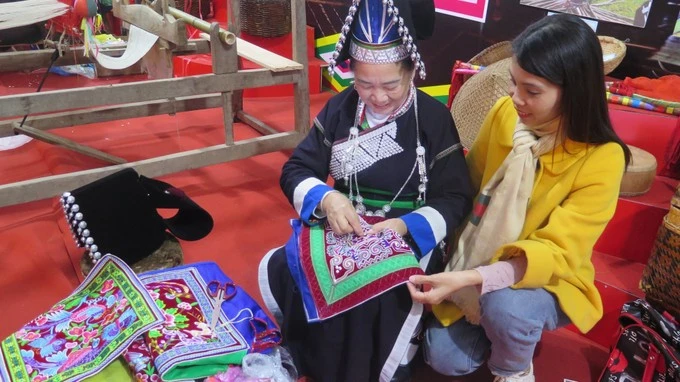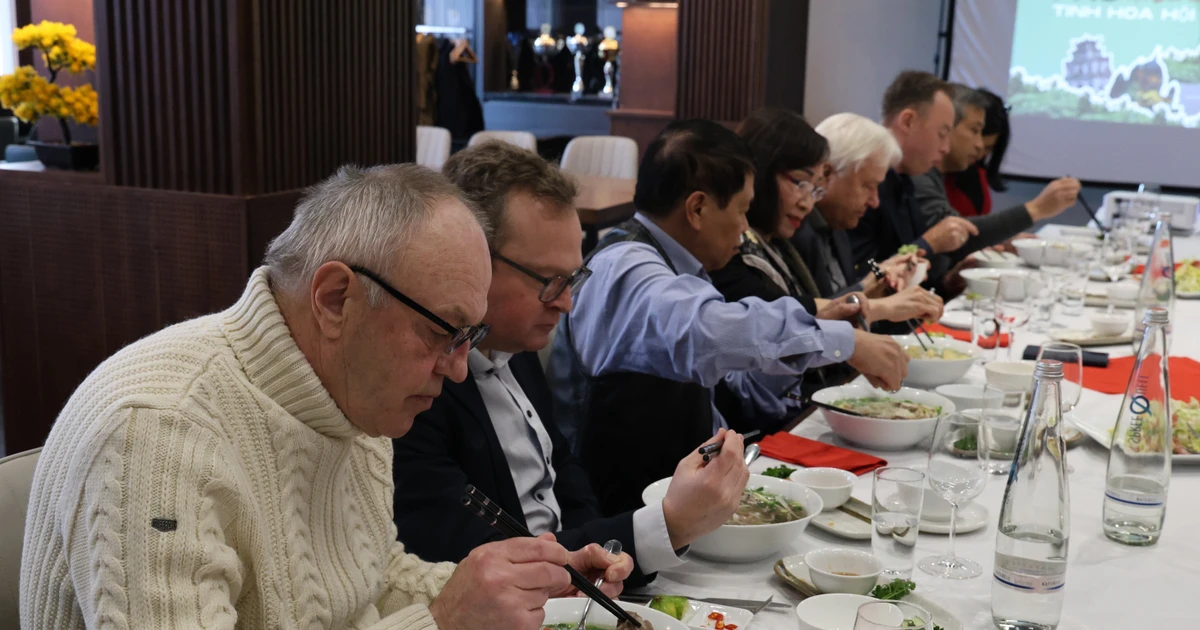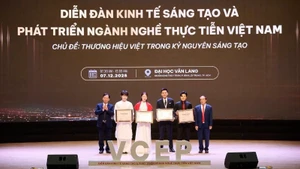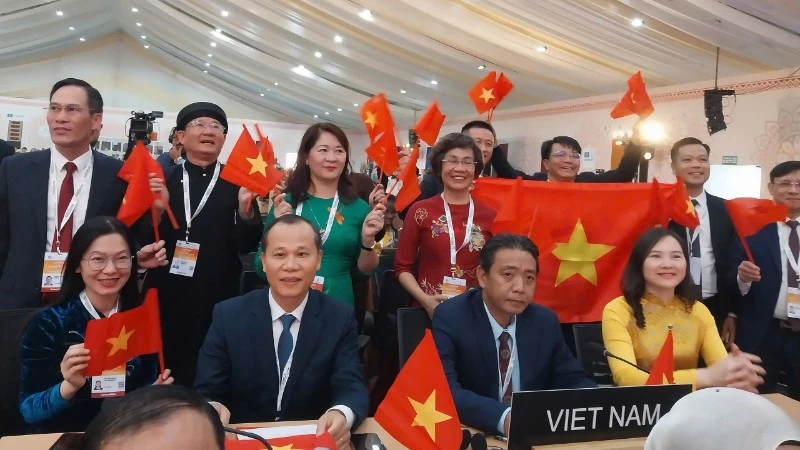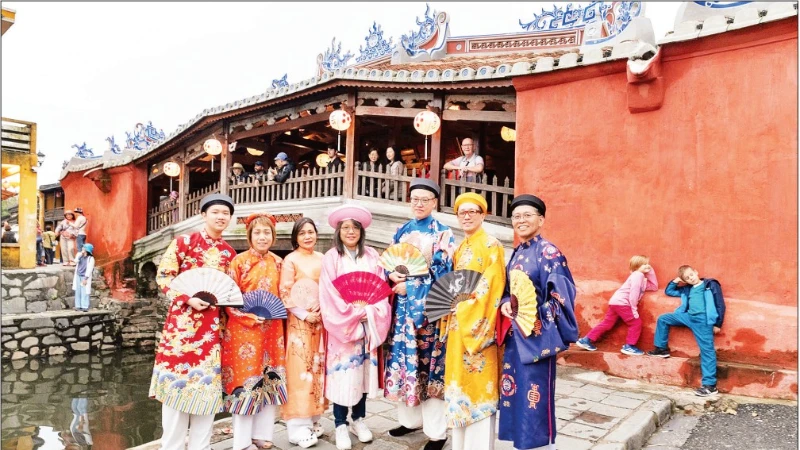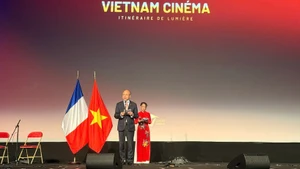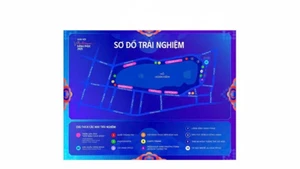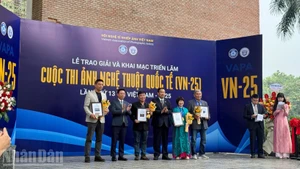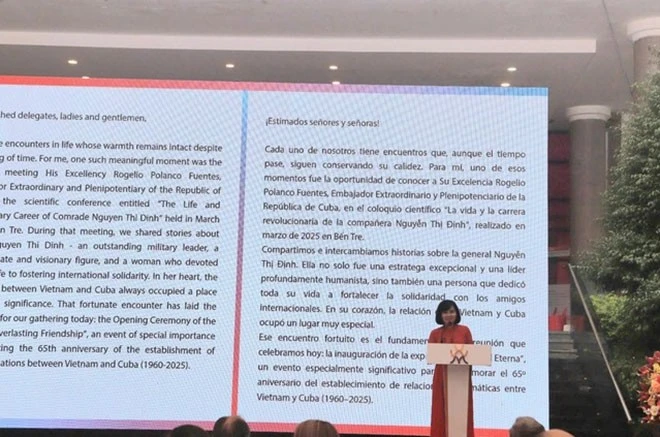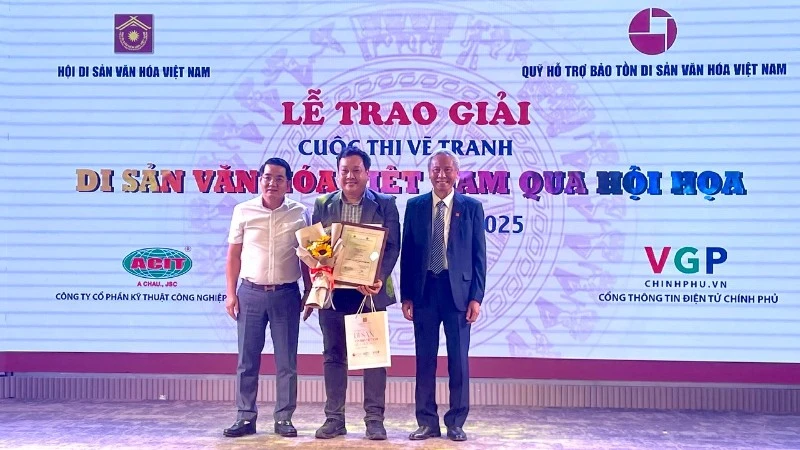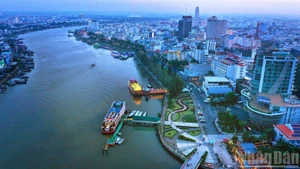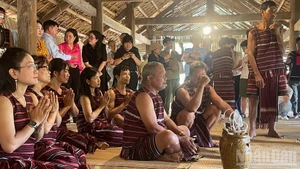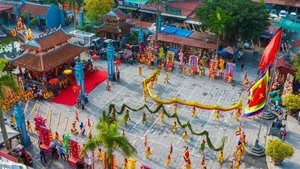The project is a practical activity to celebrate the 50th anniversary of the Liberation of the South and National Reunification Day (April 30, 1975 - April 30, 2025) and promote historical and cultural sites across the country, thus contributing to promoting tourism development in Vietnam.
Accordingly, the project is implemented at three sites in Binh Dinh Province: the Quang Trung Museum - Tay Son Tam Kiet Temple relic site (special national relic); the Twin Towers relic site - Champa art architecture (national relic); and the Eo Gio scenic spot (an exemplary tourist destination of the province).
Special national historical relic
Tay Son Tam Kiet Temple, located in Phu Phong Town, Tay Son District, Binh Dinh Province, is one of the most important historical relics in Vietnam. This is the place to commemorate three Tay Son brothers: Nguyen Nhac, Nguyen Hue (Quang Trung), and Nguyen Lu — national heroes who led the Tay Son uprising, contributing to changing the history of the country.
The temple was built on the old family land of Ho Phi Phuc and Nguyen Thi Dong — the father and mother of the three Tay Son brothers. After the collapse of the Tay Son Dynasty, the family's house was destroyed. However, with deep gratitude, the local people rebuilt a communal house as a place of worship, which later became Tay Son Palace.
In 1979, Tay Son Palace was recognised as a national historical relic. Today, the relic site has been expanded and preserved, becoming a must-see destination for those who love the Vietnamese history and culture.
Ancient Champa architectural masterpiece
Twin Towers, also known as the Hung Thanh Towers, is one of the famous Cham tower clusters in Binh Dinh Province, located on Tran Hung Dao Street, in Dong Da Ward, Quy Nhon City. This is one of the eight remaining ancient Cham tower clusters in the province, bearing the cultural and historical imprints of the ancient Champa kingdom.
The Twin Towers were built in the late 12th century during the Vijaya period, when Binh Dinh was the capital of the Champa Kingdom.
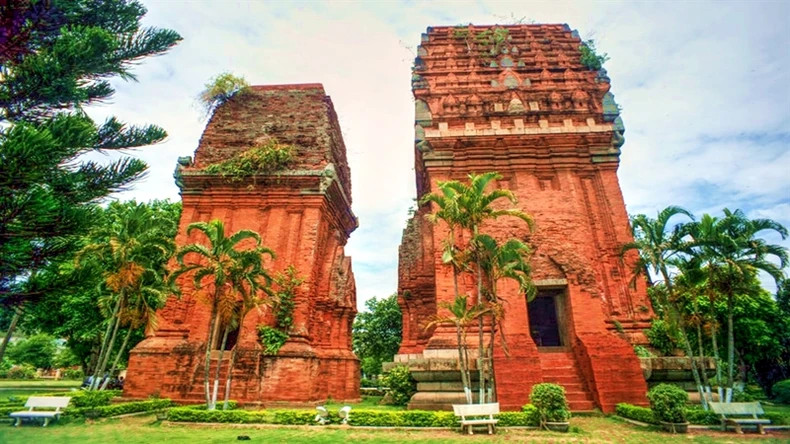 |
| The Twin Towers |
The tower cluster consists of two towers standing next to each other, with the large tower about 20m high and the small tower 18m high. The architecture of the towers has a unique style, combining Cham Pa art and Khmer cultural influences, expressed through sophisticated carvings and harmonious layouts.
The Twin Towers are not only a historical relic but also an attractive tourist destination in Quy Nhon. With a convenient location, only about 5 to 10 minutes from the city centre, visitors can easily visit and explore the ancient beauty of this work.
In addition to admiring the architecture, visitors also have the opportunity to learn about the history and culture of Champa Kingdom through the stories and displayed artifacts. The Twin Towers were ranked as a national artistic architectural relic in 1980, affirming their special cultural and historical value.
Natural masterpiece in heart of Quy Nhon
Eo Gio, located in Nhon Ly Commune, Quy Nhon City, Binh Dinh Province, is one of the most famous scenic spots in the land of martial arts. With its wild and majestic beauty, it is considered a picturesque landscape painting, attracting thousands of tourists every year.
Eo Gio is located about 20km north of Quy Nhon City Centre. It is surrounded by two high rocky mountain ranges, creating a small strait facing the ocean. The name "Eo Gio" comes from its special shape.
Eo Gio stands out with its clear blue sea, steep rocky mountain ranges with unique shapes, eroded by nature over hundreds of years. In the early morning, visitors can watch the beautiful sunrise. The sunlight rising above the sea, mixed with the sound of waves and cool breeze, creating a peaceful and poetic scene.
 |
| Eo Gio |
The best time to visit Eo Gio is between April and September, when the weather is dry, the sky is clear, and the sea is calm. This is also the ideal time to participate in outdoor activities and fully enjoy the beauty of nature.
New travel experiences
The chip panels are designed in two colours, yellow and red, inspired by the Vietnamese national flag, and they can operate automatically without a power source. Coming to the above locations, visitors using their phones to interact with the NFC chip panels, will be certified as having checked in at the location, personal photos can be saved, and they will receive useful information about the location, relic or destination.
Each chip panel will provide stories, photos, images or 3D models of the location, relic where the chip panel is installed. At the same time, it provides search, navigation, and information to explore tourist destinations at the current location and neighbouring areas. When visitors experience all the chip-mounted locations in a locality, they will receive gifts from the program and a digital certificate upon completion of the exploration there.
According to Tran Minh Tuan, Head of the "Love Vietnam So Much" project at Phygital Labs Joint Stock Company, in the coming time, the project will develop new challenge games for tourists to explore. It will also optimise features to serve tourism such as guiding and supporting visitors to move other locations when a location is too crowded; providing information to tourists about important events in localities. The project will also standardise the content to translate into other languages, contributing to promoting and introducing Vietnamese tourism to the world.
Pham Ngoc Thai, Deputy Director of Binh Dinh Province’s Department of Culture, Sports and Tourism, said that the "Love Vietnam So Much" project has significantly contribute to recreating the natural beauty and cultural traditions of the locality, helping to spread to a large number of domestic and international communities.
The "Love Vietnam So Much" project aims to promote historical and cultural sites and destinations across the country, from Ha Giang Province to Ca Mau Province, thereby creating unique discovery experiences for visitors, supporting and promoting tourism in localities as well as the whole country.
The use of this NFC chip panel in Binh Dinh Province will help the province implement its digital transformation strategy, combining official information and data with technology and creative ideas to vividly and effectively promote important historical and cultural events and local tourism products.
